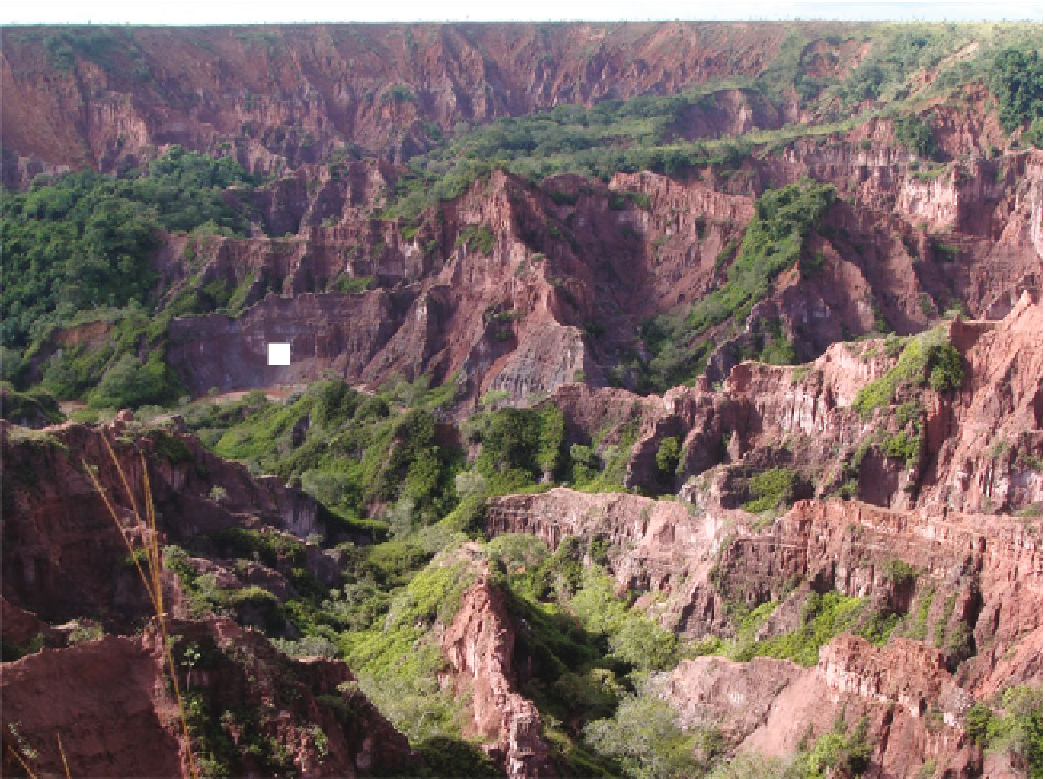Geology Reference
In-Depth Information
650m
C4
C3
C2
555m
C4
C3
C2
Fig. 9.12
Photograph of large cirque within Kabambaie catchment (coordinates 21.09089
E, -5.77704
S, and elevation 650-550 m) in the
Tshikapa area. Unit C2 is observed at the base, and this is overlain by a thin band of C3 and a much thicker C4 succession
influences. T1 is observed above this level only in core 169-
X020, and is characterized by mostly loose, well-rounded,
well-sorted sands, thin ferruginous sandstone and conglo-
merate beds and unusual thin bedded phosphates. Overall,
the sedimentology of the Tshikapa area is internally consis-
tent, but very different from the stratigraphy observed in the
Kananga, Mbuji-Maya or Kabinda areas.
which frequently overlie crystalline basement. Alluvial fan
conglomerates within these cores range from coarse, imma-
ture proximal fan facies to better-sorted, distal fan facies. In
many cases alluvial fan dominated strata conformably grade
into fluvial channel and paleosol deposits. Up section across
much of the region, small-scale wind-blown aeolian dunes
interfinger with fluvial channels. On the western margin,
near Kananga, aeolian facies dominate the middle-upper
portion of the C4 stratigraphy. The middle and particularly
upper portions of the stratigraphy across the area is character-
ized by numerous small and spatially restricted, ephemeral
lakes (FA4) that commonly interfinger with the aeolian dunes
or fluvial channels. The age and stratigraphic assignment of
these beds is somewhat enigmatic due to a general dis-
cordance between biostratigraphic indicator fossils that sug-
gest correlation to J1 or C2, and the presence of much
younger detrital zircons in the Kabinda Area that have led
us to tentatively place the basal alluvial fan conglomerates of
9.4.4.2 Kananga and Mbuji-Mayi Areas
Between Kananga and Mbuji-Mayi, eight cores were exam-
ined in detail (Fig.
9.9
), including: cores 157-X017 and -
X016 (Fig.
9.13
); cores 157-X015 and 171-X026 ; cores
172-X095, -X286, -X111, -X146 and -X050 (Fig.
9.8B
,
but not included in fence diagram). Although this region is
characterized by basement highs and highly variable topo-
graphy, there appears to be a reasonably consistent strati-
graphy across the region. In particular, coarse alluvial fans
(FA3) characterize the base of the stratigraphy in most cores,






Search WWH ::

Custom Search